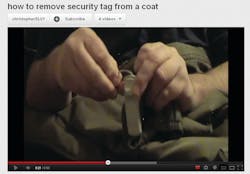The Tactics of ORC
Organized Retail Crime (ORC) has been the bane of retailers for years and was first addressed by merchants in the late 1980s. Since then, ORC has grown into a yearly multi-billion dollar business that not only injures the retailer, but also the consumer, who has to pay higher prices. There is another loss — the one to communities in the form of lost tax revenue, which has a direct effect on state and local governments and school budgets causing a direct impact on the quality of life.
Since the early days, when ORC was first recognized, retailers have taken great steps to combat the crime. The most important step was the education of lawmakers who have passed laws across the nation combating Organized Retail Crime. Many of today’s retail trade organizations such as the National Retail Federation (NRF), the Food Marking Institute (FMI), Retail Industry Leaders Association (RILA), along with many other organizations have taken up the fight.
Individual state statutes have been enacted that directly address the use/possession of tag defeating/removal devices. I’ve seen cases where individuals were criminally charged with stiffer laws directly tied to ORC — some in theft cases for possession of a pair of pliers that could be used to remove EAS and Inktags.
Retailers have taken a number of steps at store level to help deter ORC thefts. One early method, still used today, is Electronic Article Surveillance (EAS) system that emits an alarm when tagged merchandise is passed through the pedestals. The problem is that once new technology is introduced, the thieves go to work to combat or neutralize it. Foil lined bags were quickly developed to keep the EAS signal from penetrating the bag and activating the alarm. The good news is that technology has been developed to negate the effects of foil lined “booster bags” and clothing.
How-to articles exist across the Internet instructing would-be thieves on how to bypass alarms and remove EAS tags. A quick search on Ebay found tag removing devices for sale and an internet search found more than 20 pages of YouTube videos and other articles on how to illicitly remove EAS tags and many more offered sites to purchase such devices.
The ORC thieves tend to use the same techniques that have worked for them over the years. In the 1970s when working Loss Prevention for a retailer, I encountered an a large group of record thieves out of New Jersey who all had special overcoats that had large pockets sewed into the linings. The proceeded to load up with over $15,000 in records, and as they waddled out of the store, the local police and I were waiting for them.
This is an early example of an ORC group traveling the Midwest and Northeastern United States and responsible for untold losses. That was my first experience with “booster coats” and today I still have one of the coats and use it as a training aid when I talk to retailers about ways thieves steal their products.
The only difference today is the targeted product isn’t records — instead it is DVDs, razorblades, infant formula, electronics and even Tide liquid detergent. The next time you see these products at your local flea market you will be asking yourself, is this an ORC theft?
Curtis Baillie, CSC, is president of Security Consulting Strategies LLC. He is a member of the International Association of Security Consultants (IAPSC) and his blog, "Security2LP" is available at www.SecurityInfoWatch.com/blogs.



